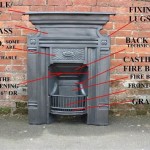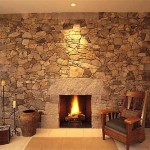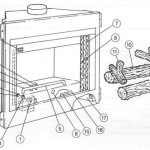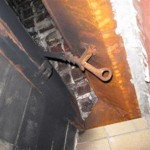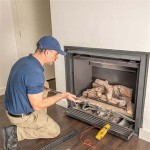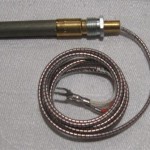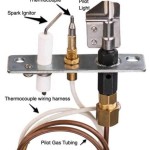Wood Mantels For Gas Fireplaces: Considerations and Selection
Wood mantels have long been a popular architectural feature, adding warmth, character, and a focal point to living spaces. When integrated with gas fireplaces, they offer a blend of traditional aesthetics and modern convenience. Selecting the right wood mantel for a gas fireplace involves careful consideration of safety, design, and installation factors.
Gas fireplaces provide a controlled and efficient heating source, eliminating the mess and maintenance associated with traditional wood-burning fireplaces. However, the heat generated by a gas fireplace still needs to be addressed when incorporating a wood mantel. Improper installation or the use of unsuitable materials can pose a fire hazard and compromise the integrity of the mantel. Therefore, understanding the regulations and best practices for installing wood mantels near gas fireplaces is paramount.
This article explores the key considerations involved in choosing and installing wood mantels for gas fireplaces, including safety regulations, material selection, design considerations, and proper installation techniques. The information provided aims to assist homeowners and professionals in making informed decisions to ensure a safe, aesthetically pleasing, and functional fireplace surround.
Safety Regulations and Clearances
Safety is the most critical factor when installing a wood mantel above a gas fireplace. Building codes and manufacturer specifications dictate the minimum clearances required between the fireplace opening and combustible materials, including wood mantels. These clearances are designed to prevent the wood from overheating and potentially igniting. Failure to adhere to these regulations can result in a fire hazard and violate building codes, potentially leading to legal repercussions.
Local building codes typically reference national standards, such as those established by the International Residential Code (IRC) and the National Fire Protection Association (NFPA). These codes provide specific guidelines for fireplace installations, including requirements for hearth extensions, chimney construction, and clearances to combustible materials. It is essential to consult with local building officials or qualified fireplace installers to determine the specific requirements for a particular location.
The manufacturer's instructions for the gas fireplace are also crucial. These instructions will specify the minimum clearances required for the particular fireplace model. These clearances may vary based on the fireplace's BTU output, design, and venting system. It is imperative to follow the manufacturer's instructions precisely to ensure safe and compliant installation.
Generally, the higher the BTU output of the gas fireplace, the greater the required clearances. This is because a higher BTU output generates more heat, increasing the risk of igniting nearby combustible materials. The shape and size of the fireplace opening also influence the required clearances. A larger opening may require greater clearances to prevent heat from radiating directly onto the mantel.
In addition to horizontal clearance above the firebox opening, the depth and projection of the mantel also affect the required clearances. A deeper or more projecting mantel will require greater vertical clearance to ensure adequate ventilation and prevent heat buildup behind the mantel. Some manufacturers recommend using a non-combustible material, such as cement board or stone, as a heat shield behind the mantel to reduce the required clearances. This heat shield acts as a barrier, preventing heat from transferring directly to the wood mantel.
When planning a wood mantel installation, it is advisable to err on the side of caution and provide more clearance than the minimum required by code and manufacturer specifications. This extra margin of safety can help mitigate the risk of overheating and provide peace of mind.
Material Selection and Design Considerations
The choice of wood for a mantel above a gas fireplace is critical, influencing both its aesthetic appeal and its ability to withstand the heat generated by the fireplace. Different wood species possess varying levels of heat resistance, density, and moisture content, all of which affect their suitability for use as a mantel.
Hardwoods, such as oak, maple, and cherry, are generally preferred for wood mantels due to their density, durability, and resistance to warping. These woods can withstand higher temperatures and are less likely to crack or split than softer woods like pine or fir. However, even hardwoods can be susceptible to heat damage if not properly installed and protected.
The moisture content of the wood is another important factor to consider. Wood with a high moisture content is more likely to warp or crack when exposed to heat. Kiln-dried wood, which has been dried in a controlled environment to reduce its moisture content, is the preferred choice for mantels. Kiln-dried wood is more stable and less prone to movement or distortion.
In addition to the type and condition of the wood, the finish applied to the mantel can also affect its heat resistance. Certain finishes, such as polyurethane, can create a protective barrier that helps prevent heat from penetrating the wood. However, it is important to choose a finish that is specifically designed for high-temperature applications to prevent it from melting or emitting harmful fumes when exposed to heat.
Beyond material selection, the design of the mantel is crucial for achieving the desired aesthetic. Mantels are available in a wide range of styles, from traditional to contemporary, and can be customized to complement the overall décor of the room. The size, shape, and detailing of the mantel should be carefully considered to create a balanced and harmonious fireplace surround.
A traditional mantel typically features ornate carvings, moldings, and a substantial shelf. These mantels often evoke a sense of history and elegance. A contemporary mantel, on the other hand, typically has clean lines, minimal detailing, and a more streamlined appearance. Contemporary mantels often emphasize simplicity and functionality.
The size of the mantel should be proportional to the size of the fireplace and the room. A mantel that is too small may look insignificant, while a mantel that is too large can overwhelm the space. The height of the mantel should also be carefully considered to ensure it is comfortable to view and does not obstruct the fireplace opening. The depth of the mantel shelf should be sufficient to accommodate decorative items without appearing cluttered.
Installation Techniques and Best Practices
Proper installation is essential for ensuring the safety and longevity of a wood mantel above a gas fireplace. The installation process involves several steps, including measuring, cutting, securing, and finishing the mantel. It is crucial to follow best practices and adhere to building codes throughout the installation process.
Before beginning the installation, it is essential to accurately measure the fireplace opening and the surrounding wall. These measurements will determine the size and shape of the mantel and the placement of the mounting hardware. It is also important to locate any studs in the wall that can be used to securely attach the mantel.
The mantel should be cut to the appropriate size and shape using a saw. Accuracy is crucial at this stage to ensure a snug and professional fit. The edges of the mantel should be sanded smooth to prevent splinters and create a polished appearance.
The mantel can be attached to the wall using a variety of methods, including screws, brackets, and adhesives. The choice of attachment method will depend on the weight of the mantel, the type of wall, and the desired aesthetic. For heavier mantels, it is recommended to use screws or bolts to secure the mantel to the wall studs. Brackets can be used to provide additional support and distribute the weight of the mantel evenly.
When attaching the mantel, it is important to ensure that it is level and plumb. A level can be used to check the horizontal alignment of the mantel, and a plumb bob can be used to check the vertical alignment. Any adjustments can be made by shimming the mantel or adjusting the mounting hardware.
Once the mantel is securely attached to the wall, the joints and seams can be filled with wood putty and sanded smooth. The mantel can then be finished with paint, stain, or a clear coat to protect the wood and enhance its appearance. It is important to follow the manufacturer's instructions for the chosen finish and allow it to dry completely before using the fireplace.
Proper ventilation behind the mantel is also crucial for preventing heat buildup. This includes ensuring a sufficient gap between the back of the mantel and the wall and avoiding sealing the mantel tightly against the wall. Adequate ventilation allows heat to dissipate, reducing the risk of overheating and fire.
Finally, it is crucial to inspect the mantel regularly for any signs of damage, such as cracks, splits, or discoloration. If any damage is detected, the mantel should be repaired or replaced promptly to prevent it from becoming a safety hazard. A qualified fireplace professional can assess the condition of the mantel and recommend the appropriate course of action.

Marquess Keenan Mantels Mm Gas Fireplace Mantel Toronto Best

Fireplace Mantels Mantel Shelves Custom Surrounds And More Direct

Types Of Fireplaces And Mantels The Home Depot

Imperial Keenan Mantels Mi Gas Fireplace Mantel Toronto Best

Wood Mantel And Surround For Corner Gas Fireplace Mantels

Fireside Finishings Malone Wood Mantel Hearth Home

Fireplace Mantels Mantel Shelves Custom Surrounds And More Direct

Wood Mantel Reclaimed And Custom Cape Cod Ack Mv

Sheridan Wood Fireplace Mantel In 2024 Mantels Gas Insert
:max_bytes(150000):strip_icc()/sandandsisal-bdc76ad938a44d28ae9e23ef6c9fa331.jpg?strip=all)
17 Diy Fireplace Mantel Plans

